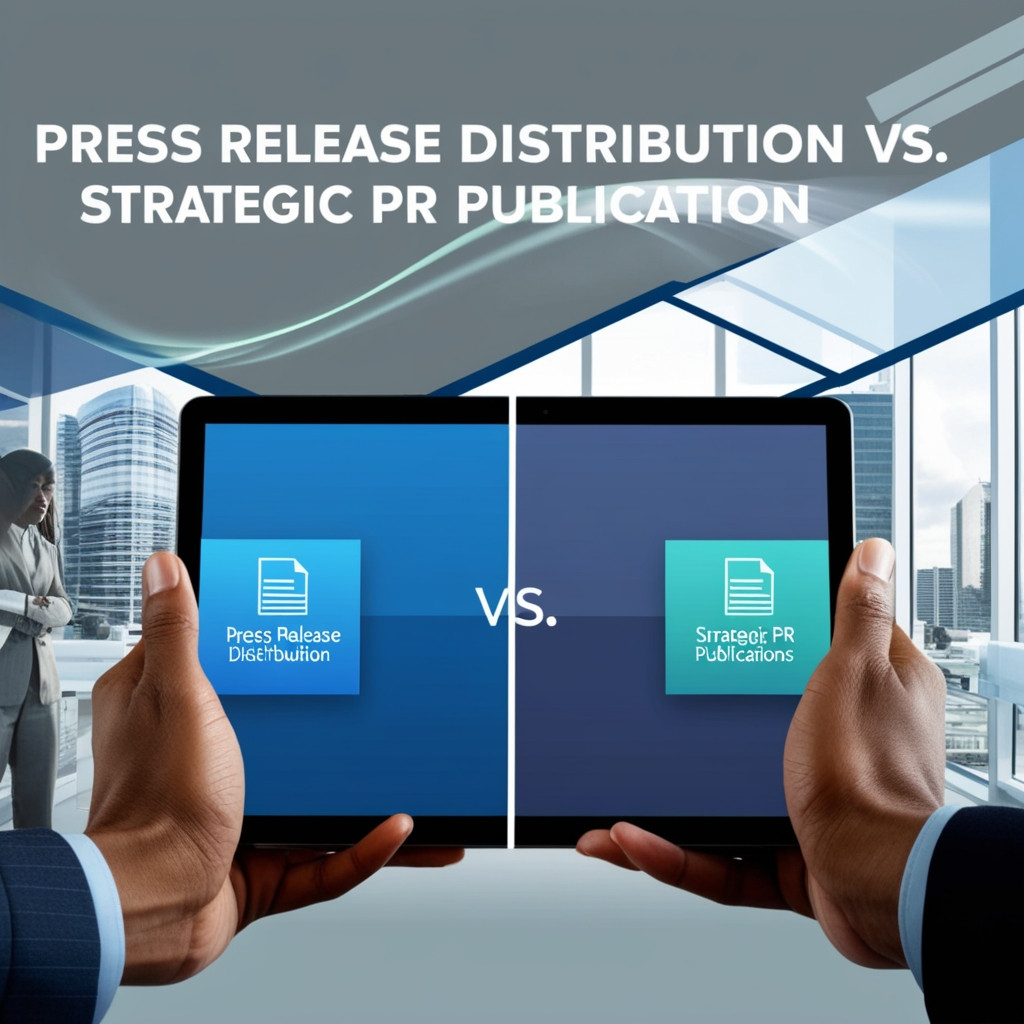Press Release Distribution vs. Strategic PR Publications: What’s Best for Your Business?

Let’s get one thing straight: not all publicity is created equal.
You write a press release. You pay the wire fee. It hits a thousand inboxes like a confetti cannon. Cue the crickets.
Meanwhile, your competitor lands a full-page story in Fast Company, casually positioning itself as the savior of an entire industry. You stare at your analytics dashboard as if it had just insulted your mother.
So what gives?
Welcome to the complex, often misunderstood world of press release distribution versus strategic PR publications, a subtle yet critical distinction. If you’re unsure which option is right for your business, don’t worry. Most people mix them up. But today? We’re fixing that.
The Great Mix-Up: What’s What?
Press release distribution is your mass email to the universe. You’ve news (new product, event, funding, executive hire), and you want everyone to know about it quickly. It’s the PR version of casting a wide net and hoping something bites.
Strategic PR publications, on the other hand, are like tailored suits. Custom-fit stories are placed in high-authority media outlets through curated relationships. We’re talking about thought leadership pieces, exclusive interviews, and expert commentary. It’s less “Look at me!” and more “Here’s why I matter.”
Spoiler: Both can work. But not for the same goals and certainly not with the same impact.
Press Release Distribution: Spray-and-Pray with a Side of Value
Let’s not be too harsh. Press releases serve a purpose. When used right, they’re like signal flares: loud, bright, and immediate.
Product launch next week? Press release.
Hosting a groundbreaking event? Press release.
Just got acquired? Yeah, hit the wire.
The pros?
- Speed: News hits fast.
- Coverage: Syndicated across dozens (sometimes hundreds) of sites.
- Control: You write it. You own the message.
The not-so-pretty side?
- Low engagement. People read headlines, not wires.
- Generic placement in low-traffic newsrooms.
- Journalists may skim or ignore it entirely.
Here’s the truth: most press releases end up floating in a sea of sameness. They check the “we announced it” box but rarely drive real brand traction.
Strategic PR Publications: The Slow Burn That Actually Works
Now flip the coin.
You invest time. Let's pitch a story idea about how your founder built the company after getting laid off in 2020. Or a thought piece on where AI in healthcare is headed. It gets placed in Entrepreneur, and suddenly, you're not just a brand, you’re a voice.
This is where professional PR publication services shine.
Why do they work?
- Credibility by association (Oh wow, they’re in TechCrunch?)
- Deeper audience trust
- Better SEO (yes, links from top outlets actually matter)
- Higher conversion potential
What’s the catch?
- Takes more time
- Requires storytelling chops
- You’ll need media relationships or someone who has them
But here’s the kicker: While a press release might earn you a short spike in traffic, strategic PR is a compounding asset. It sticks. It gets referenced. It gets remembered.
So, When Should You Use What?
Think of it like this:
Use press releases when you're announcing something time-sensitive. A “need-to-know-now” kind of deal.
Use strategic PR when building your reputation, sharing expertise, or trying to establish long-term trust.
Want both? Smart move.
Let’s say you’re launching a new B2B SaaS tool.
- Press Release: Announce the launch, share core specifications, and include a compelling quote from your CEO.
- Strategic PR: Your founder publishes a byline about solving a problem no one else is talking about in your niche.
One generates attention. The other generates authority.
The Secret Sauce: How PR Pros Maximize Both
Here’s where professional PR publication services quietly change the game.
They have the Rolodex (or, more accurately, Google Sheets) full of editor contacts. They know which reporters are interested in specific types of stories. And they don’t just fire off press releases and hope they craft narratives.
- Instead of dumping your news into the void, they pitch it with a hook.
- Instead of “We’re excited to announce…,” they lead with what’s actually interesting.
- They help you blend fast exposure (press releases) with long-term strategy (earned media placements).
You don’t have to choose one or the other. However, you do need to know when and how to use both effectively.
Final Word: Your Brand Isn’t Boring, So Don’t Sound Like It
Look, PR isn’t a one-size-fits-all game. If that were the case, everyone would be famous by now.
Press release distribution has its place. So does strategic PR publication. But if you want credibility, that compounds? You need both working in sync with a strategy that actually respects your story.
Because shouting louder won’t help if no one believes what you’re saying.
So, go ahead, break some news. Then, follow it up with a story worth sharing.
The headlines? Those will come.